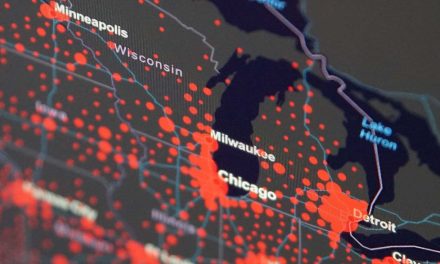
August is National Water Quality Month, a month dedicated to bringing awareness to the fact that access to clean water is a human right we all share.
In Wisconsin — home of 15,000 lakes, two of the largest freshwater bodies in the world, and an amount of groundwater roughly equal to the volume of Lake Michigan — what could possibly stand in the way of guaranteeing that human right? Why is it that too many Wisconsinites — people living in communities like Marinette, La Crosse, Milwaukee and Kewaunee County — cannot safely drink the water coming out of their taps?
Uncovering the answer to those questions requires a basic understanding of the three main drinking water contaminants that threaten the health of Wisconsin residents: lead, nitrates and synthetic chemicals known as PFAS. Lead from aging water service lines continues to be a significant cause of lead poisoning in Wisconsin. Thousands of Wisconsin children test positive for dangerous levels of lead exposure each year. Lead is a neurotoxin. It is unsafe at any level and can have profound developmental impacts on children who are exposed.
Nitrates are contaminants that are associated with birth defects and an increased risk of cancer. The vast majority of nitrate contamination in Wisconsin comes from excessive manure and fertilizer application on agricultural lands. Ten percent of private wells across the state contain unsafe levels of nitrates. In areas where agriculture is the predominant land use, the percentage of contaminated wells can be much higher.
PFAS are synthetic chemicals that have been used for decades in a wide variety of manufacturing processes and consumer products such as firefighting foam, nonstick cookware and more. Exposure to PFAS at even extremely low levels has been linked to serious health issues, including an increased risk of cancer. Sites of PFAS contamination are being discovered throughout the state, particularly near industrial facilities that used PFAS compounds, like Tyco’s firefighting foam facility in Marinette, and around airports where these foams were released in the environment, such as on French Island near the La Crosse airport.
Yet, simply identifying the three main water contaminants in our state does not explain why they continue to be such a problem. Wisconsin has faced water contamination problems before and has made significant progress in addressing them in the past. Indeed, in previous decades, Wisconsin was seen as a leader in safe drinking water.
Wisconsinites demanded that officials protect clean water, and government responded, resulting in some of the most forward-looking environmental laws in the nation. Wisconsin was the first to ban the pesticide DDT after Rachel Carson’s Silent Spring drew attention to its toxic effects. A few years later, Wisconsin regulations were seen as a model when the Clean Water Act was passed in 1972. In the early 1980s, Wisconsin was one of the first states to pass a comprehensive groundwater protection law.
Why has Wisconsin fallen behind?
The barrier to ensuring that all Wisconsin residents have access to safe drinking water is not that Wisconsin does not have the laws and resources needed to address lead, nitrates and PFAS. Rather, the problem we currently face is that powerful special interests and their allies in Wisconsin’s Legislature are preventing the state from using those laws to respond to communities that are burdened by contaminated water. Here are three examples of how this is playing out right now.
LEAD
In the past two legislative sessions, Republicans in the legislature have refused to follow Gov. Tony Evers’ budget recommendation to invest in additional funding to speed up the replacement of lead laterals throughout the state. And the failure to address lead in water was not for a lack of resources. The second time legislators deleted this funding from the budget, the state had an unprecedented surplus in revenue. Legislative leaders, elected from gerrymandered rural and suburban districts, have said they are opposed to the measure because too much of the funding would go to Milwaukee. Never mind that lead lateral service lines and lead-poisoned children are, unfortunately, found in every area of Wisconsin.
The state Legislature’s rejection of funding for lead lateral replacement prompted the Sustain Rural Wisconsin Network to say during the last budget process, “we reject politicians’ cynical efforts to pit urban communities against rural communities. When politicians think that these divide-and-conquer tactics count as representing their constituents, we all lose.”
Thankfully, current infrastructure spending proposals in Congress include additional funding for lead service line replacement. But that federal funding has not yet passed, and, if it does, Wisconsinites will have to be vigilant to ensure that it is equitably distributed.
NITRATES
While Republicans in the Legislature have shown a disregard for the health of urban dwellers whose municipal drinking water is delivered by lead service lines, they are equally unmoved by the plight of tens of thousands of rural Wisconsin families whose private well water has been contaminated by nitrates.
To address the problem, the Evers administration and the Wisconsin Department of Natural Resources (DNR) have proposed changes to agricultural runoff regulations. The changes would reduce the amount of nitrates that make their way into groundwater. The plan would be phased in over time and provide cost-sharing to assist small- and medium-sized farms implement the changes.
In previous years, DNR would have been able to move forward with these kinds of improvements to protect our drinking water, but industry lobbyists and the Legislature now have more power to stand in the way. Under a 2017 law signed by former Gov. Scott Walker, called the REINS Act, the legislature can block changes to regulations if compliance costs for regulated entities exceed $10 million over a two-year period. DNR estimates that the cost to the business community would be well below this threshold, while industry groups claim compliance costs could be in the billions of dollars. Thanks to the REINS Act, a committee of the Legislature called the Joint Committee for the Review of Administrative Rules (or “JCRAR”), could stop the process in its tracks by adopting industry groups’ outlandish claims.
This means a few legislators who control an obscure legislative committee could leave tens of thousands of rural Wisconsinites without any plan to address nitrate contamination. The next months will be critical. All of us concerned about clean water in our state must demand that the Legislature not prevent the DNR from using existing water protection laws to achieve clean drinking water in rural Wisconsin.
PFAS
Perhaps the most brazen example of special interest attempts to rob the state of its ability to address water pollution is Wisconsin Manufacturers & Commerce’s (WMC’s) pending lawsuit against the DNR. WMC, the state’s largest business lobbying group, is asking a court to strip the DNR of its power to order investigation and remediation of PFAS contamination under Wisconsin’s 40-year-old Spills Law. WMC’s lawsuit takes a sledgehammer to this bedrock environmental health protection, and it seems WMC does not care how many people will be harmed in the process. The Spills Law is the only existing law that applies to PFAS. If WMC is successful, people living in Marinette, La Crosse and other communities where PFAS contamination prevents people from drinking their water, will have nowhere to turn.
Fighting back
My organization, Midwest Environmental Advocates, is in court on behalf of communities whose access to clean water is on the line. We are determined to ensure that DNR’s ability to protect and restore our water resources is not diminished. One of our clients, Doug Oitzinger, a former mayor of Marinette, says the journey that led him to take on the most powerful special interest group in the state started when he realized the severity of PFAS contamination in his community. He came out of retirement and ran for local office again to be an advocate for his friends and neighbors. Doug says that if WMC prevails, all the assistance the DNR has so far provided to his community will go away. That assistance includes bottled water, well testing, cleanup and remediation.
Others like Doug — ordinary people motivated to protect the health of the people and places they love — are working in communities all over the state to ensure that Wisconsin’s environmental legacy continues to be one of protecting clean water. Just last month, five of our clients from Kewaunee County achieved a major win for clean water at the Wisconsin Supreme Court. For years, they had been asking the DNR to impose more stringent conditions on a permit for a nearby industrial livestock operation that had contaminated the drinking water of neighboring families. The Supreme Court ruled that, under the state’s water protection laws, the DNR could indeed use commonsense measures to protect water resources.
This landmark Wisconsin Supreme Court victory was achieved because five ordinary people stood against special interest obstruction and tenaciously stood up for clean water. Their success, coupled with the continued advocacy of people like Doug in Marinette, gives me hope for the future.
It certainly will not be easy, but I am optimistic that we will succeed in getting lead out of our drinking water, preventing special interests from stalling progress on nitrate contamination and preserving the power of the state to address PFAS pollution. Together, we will make Wisconsin a leader in clean water once again.
Nіck Bоltоn and Nоаh Sіllіmаn
Originally published on the Wisconsin Examiner as It’s time to reclaim Wisconsin’s legacy of water protection
Donate: Wisconsin Examiner
Help spread Wisconsin news, relentless reporting, unheard voices, and untold stories. Make a difference with a tax-deductible contribution to the Wisconsin Examiner
















